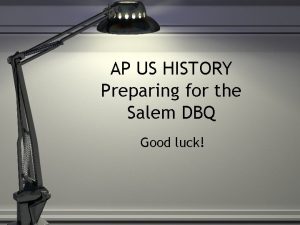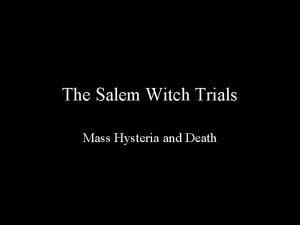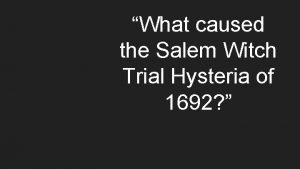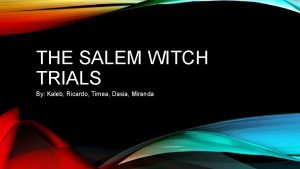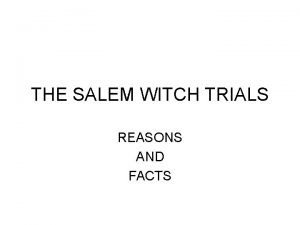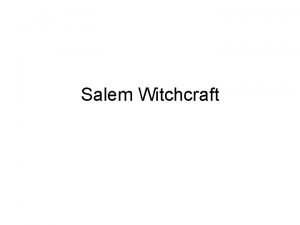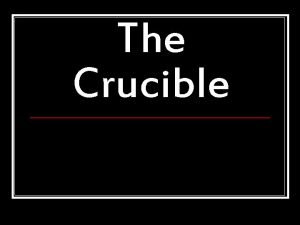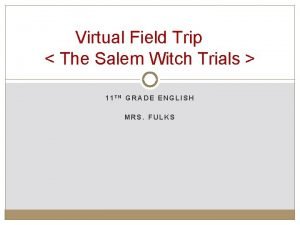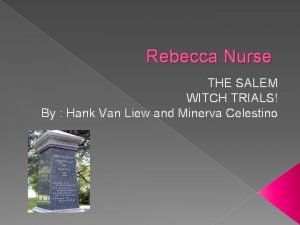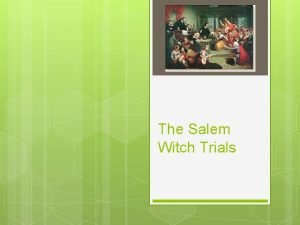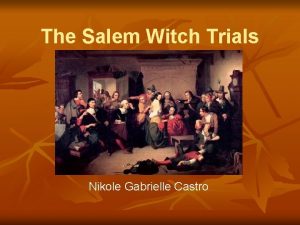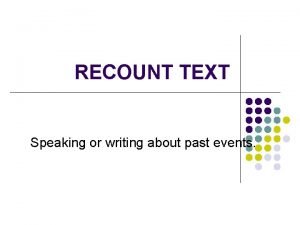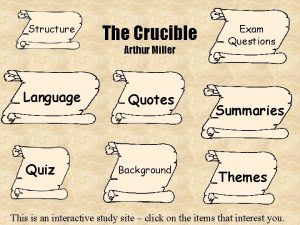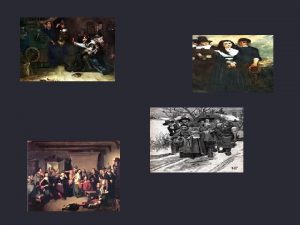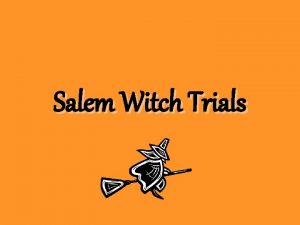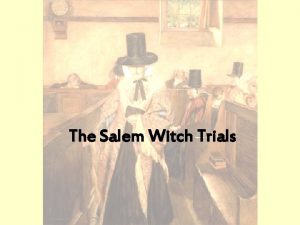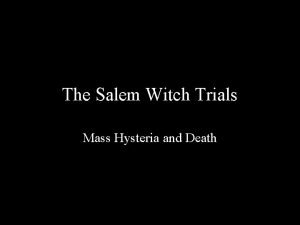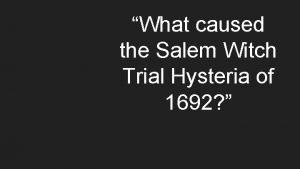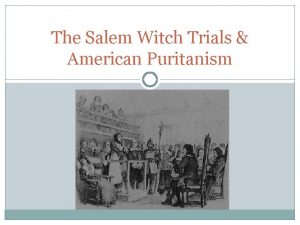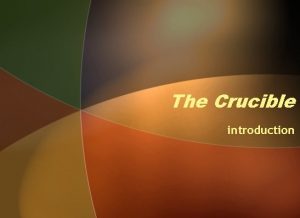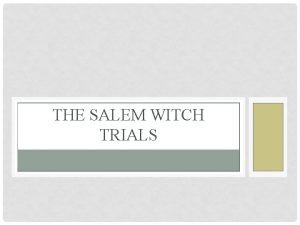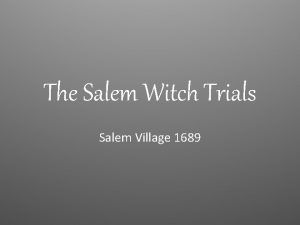The Salem Witch Hysteria What Really Happened in













- Slides: 13

The Salem Witch Hysteria What Really Happened in Salem in 1692?

Document #7 THE GEOGRAPHY OF FACTIONALISM: RESIDENTIAL PATTERN OF THE SIGNERS OF THE PRO-PARRIS AND ANTI-PARRIS PETITIONS OF 1695 Key Pro-Parris— 32 Anti-Parris— 33 =Pro-Parris =Anti-Parris Pro-Parris— 34 Anti-Parris— 8 Pro-Parris— 7 Anti-Parris— 42

Document #8

Document #9

Caption: "Accused of Witchcraft. " Description: In this scene a young girl, who has been accused of witchcraft, clings to her father who gestures towards the authorities come who have to arrest her. A clergyman raises his head helplessly towards the heavens while the accuser, standing next to him and concealed under a cape, points towards the girl.

Document #11 Key A= Accuser D= Defender A A =Accused Witch A AA D AAA A AAA D DD D A D DD AA D D A A A SALEM VILLAGE A A D SALEM TOWN A A A DD D D DD A DDD DD A A DD A D D D

Document #12

Girls clamed to have evidence that ranged from witches being able to wring there own hands, to loss of speech, to being mysteriously choked, to girls having "spectral evidence". When somebody claimed that they had "spectral evidence", they claimed that they could see an evil spirit or specter that now one else could perceive. In the beginning of the witch trials, spectral evidence was allowed in the courtroom and could be used as legitimate evidence, but later on the courts ruled that it could not be used as evidence against an alleged witch.

The people saw the Devil everywhere and didn’t hesitate to accuse anyone, whether of high or low rank, of being a witch. Other girls joined in the frenzy because they were afraid that they too were being bewitched. However, these trials were becoming a circus, the result of fear and spite. Although hanging was the most common procedure, not everyone accused lived to be hanged.

Caption: "Arresting a Witch. " Description: A generic scene that shows a woman being arrested for witchcraft, depicted conventionally as an old hag by the famous illustrator Howard Pyle. The picture illustrates an article by T. W. Higginson, "The Second generation of Englishmen in America, " which briefly describes the Salem witch trials. Artist Howard Pyle.

Examination of a Witch, by T. H. Matteson 1853. The events which led to the Witch Trials actually occurred in what is now the town of Danvers, then a parish of Salem Town, known as Salem Village. Launching the hysteria was the bizarre, seemingly inexplicable behavior of two young girls; the daughter, Betty, and the niece, Abigail Williams, of the Salem Village minister, Reverend Samuel Parris.


Caption: "Execution of Mrs. Ann Hibbins. " Description: Often used as an illustration of the Salem witch trails, this illustration depicts the execution of Ann Hibbins on Boston Commons in 1657.
 Dbq salem witch trials
Dbq salem witch trials Clinical hysteria salem witch trials
Clinical hysteria salem witch trials Salem witch trial hysteria
Salem witch trial hysteria What options did an accused witch have in salem
What options did an accused witch have in salem Salem witch trials facts
Salem witch trials facts National geographic salem witch trials
National geographic salem witch trials How is the crucible unlike the salem witch trials?
How is the crucible unlike the salem witch trials? Witch
Witch Salem witch trials rebecca nurse
Salem witch trials rebecca nurse Discovery education salem witch trials
Discovery education salem witch trials What options did an accused witch have in salem
What options did an accused witch have in salem What really happened at the first thanksgiving
What really happened at the first thanksgiving I really hate flying. once something happened to me
I really hate flying. once something happened to me Crucible symbols
Crucible symbols
